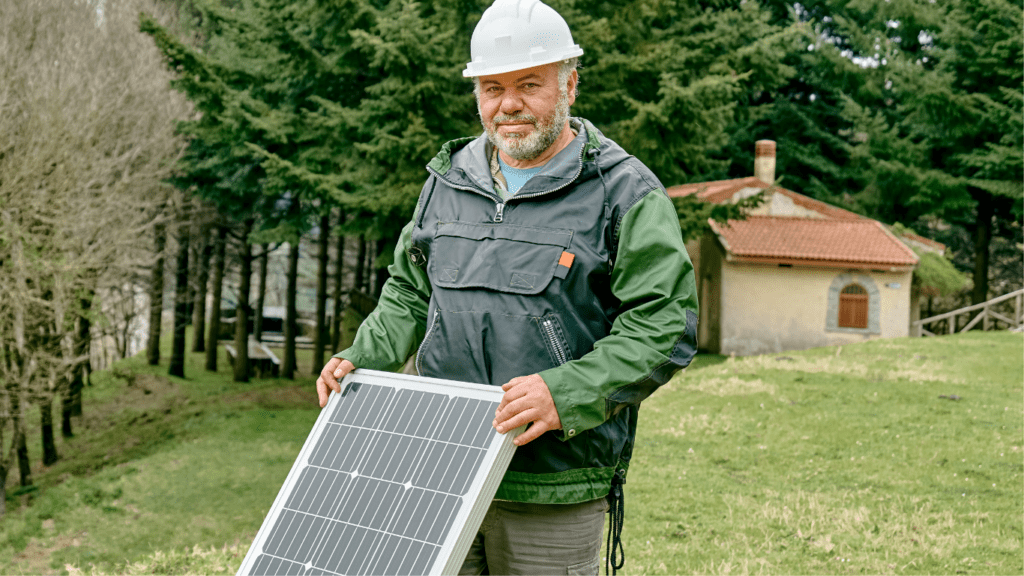Understanding the Impact of Plastic Use
Reducing plastic use has significant benefits. A plastic-free lifestyle helps protect the planet and improve our health.
Why Reducing Plastic Is Crucial
Plastic pollution ranks among the top global environmental issues. Every year, an estimated 8 million metric tons of plastic enter oceans.
This debris harms marine life; over 100,000 marine animals, including whales and sea turtles, die annually due to plastic ingestion or entanglement. Reducing plastic minimizes this harm and helps preserve biodiversity.
Environmental and Health Effects of Plastics
Plastics contribute significantly to environmental degradation. They leach toxic chemicals, like bisphenol A (BPA) and phthalates, into water, soil, and air. These pollutants disrupt ecosystems and harm wildlife. On land, plastics clog waterways and disrupt habitats.
Health risks associated with plastic are substantial. Chemicals in plastics, such as BPA, act as endocrine disruptors. They mimic hormones and can lead to developmental, reproductive, and neurological issues in humans.
Microplastics, ingested through food and water, accumulate in the body, posing long-term health risks. Reducing plastic use helps mitigate these environmental and health dangers.
Simple Tips for a Plastic-Free Kitchen

Transitioning to a plastic-free kitchen involves making simple swaps for everyday items. These changes help reduce plastic waste and lead to a more environmentally friendly lifestyle.
Alternatives to Plastic Wrap and Bags
Swap plastic wrap for beeswax wraps. Beeswax wraps can be reused and keep food fresh. They mold around containers and food items, providing an airtight seal.
Use silicone food covers. Silicone covers stretch over bowls, cups, and other containers. They’re durable and washable, making them a perfect replacement for plastic wraps.
Choose cloth produce bags. They’re washable, reusable, and often made from organic materials. Use them for fruits, vegetables, and bulk items.
Opt For glass containers with lids. These containers hold leftovers and lunches. They’re microwave and dishwasher safe, making them convenient replacements for plastic bags.
Choosing Sustainable Storage Options
- Store food in glass jars. Jars are ideal for grains, nuts, and spices. They are easy to clean, durable, and don’t leach chemicals.
- Pick stainless steel containers. Stainless steel containers are lightweight and long-lasting. They’re perfect for packed lunches and pantry storage.
- Use wooden or bamboo boxes. These natural materials don’t harm the environment. They provide a stylish and eco-friendly way to store dry goods.
- Adopt reusable silicone bags. Silicone bags are excellent for storing snacks and freezer items. They’re sturdy and can be washed after each use.
- Integrating these alternatives and options into your kitchen reduces plastic use and brings sustainability into your daily routine.
Transforming Your Bathroom Habits
Creating a plastic-free bathroom involves simple adjustments that can significantly reduce plastic waste. By making thoughtful choices, anyone can transform their bathroom habits to be more eco-friendly.
Eco-Friendly Personal Care Products
Switching to eco-friendly personal care products cuts down on plastic use. For example, opt for bar soap, shampoo bars, and solid conditioner bars instead of liquid products in plastic bottles.
These alternatives often come in compostable or recyclable packaging, making them a sustainable choice. Additionally, consider using metal safety razors with replaceable blades instead of disposable plastic razors.
Bamboo toothbrushes are another effective swap; they are biodegradable and work just as well as their plastic counterparts. Finally, explore natural skincare products that are packaged in glass or metal containers.
Non-Plastic Essentials for Daily Use
Replace daily-use plastic items in the bathroom with sustainable options. For example, choose a bamboo or wooden hairbrush over plastic varieties.
Stainless steel or glass dispensers for soaps and lotions both eliminate plastic and add an elegant touch to your bathroom decor. Opt for cotton or reusable facial rounds instead of disposable cotton pads, which often come in plastic packaging.
Switching to a menstrual cup or using reusable cloth pads can also greatly reduce single-use plastic waste. Invest in durable metal or wooden combs, and use natural fiber washcloths and loofahs instead of synthetic ones.
Taking these steps ensures a significant reduction in plastic while maintaining comfort and convenience.
On-the-Go Solutions for Plastic Reduction
Carrying reusable items and making conscious choices about shopping and dining while out can substantially reduce plastic waste.
Reusable Items for Everyday Living
Reusable items are essential for a plastic-free lifestyle, especially when you’re on the move. I always carry:
- Stainless Steel or Glass Water Bottles: Single-use plastic bottles contribute to significant waste. Switching to a durable, reusable option is cost-effective and environment-friendly.
- Bamboo or Metal Utensils: Plastic cutlery used in takeout is often not recyclable. I prefer carrying bamboo or metal utensils, which are reusable and easy to clean.
- Reusable Coffee Cups: Most coffee shops offer discounts for bringing your own cup. I use one made of stainless steel or glass to enjoy my drink guilt-free.
- Cloth Shopping Bags: Plastic bags are a major source of pollution. My solution is to keep cloth bags handy for groceries, clothes, and other shopping needs.
- Silicone Food Containers: For packed lunches and leftovers, I rely on collapsible silicone containers. They’re lightweight, durable, and eliminate the need for plastic alternatives.
Tips for Plastic-Free Shopping and Dining
Making smart choices while shopping and dining out can help reduce plastic dependency.
- Reject Plastic Packaging: Many fruits, vegetables, and bulk items come wrapped in plastic. I choose loose items and bring my own produce bags.
- Support Sustainable Businesses: Dining at restaurants or purchasing from stores that prioritize sustainable packaging supports a broader movement towards plastic reduction. I often research eco-friendly establishments before heading out.
- BYO (Bring Your Own): When ordering takeout, I bring my own containers. Many places accept them, eliminating the need for single-use packaging.
- Avoid Single-Use Straws: Plastic straws are prevalent in dining establishments. I carry a stainless steel or bamboo straw to use instead.
- Opt for Minimal Packaging: I choose products with minimal or no packaging. Bulk food sections often provide paper bags or allow for reusable container use.
Implementing these strategies helps minimize plastic waste and fosters a sustainable lifestyle.
Engaging Communities in Plastic-Free Initiatives
Engaging communities in plastic-free initiatives amplifies individual efforts and fosters collective action.
Ideas for Local Impact and Advocacy
Organizing community clean-ups encourages local participation and raises awareness about plastic pollution.
Partnering with local businesses to promote sustainable practices strengthens the community’s commitment to reducing plastic usage. Supporting local policies that ban single-use plastics and demand eco-friendly alternatives creates lasting change.
Hosting workshops on creating reusable items, such as tote bags and beeswax wraps, empowers community members to adopt plastic-free habits.
Utilizing local media and social platforms to share success stories of individuals and businesses inspires others to join the cause.
Educating Others and Spreading Awareness
Hosting educational events at schools and community centers informs people about the environmental impact of plastic waste. Sharing informative content through social media, including infographics and videos, effectively reaches a broader audience.
Collaborating with local influencers amplifies the message and enhances community engagement. Creating and distributing flyers or brochures with practical tips on reducing plastic waste helps spread awareness.
Participating in community fairs and markets to provide live demonstrations of using plastic alternatives encourages others to make sustainable choices.
 Heather Smithkers - Innovative Eco-Author at Green Commerce Haven
Heather Smithkers is a creative and forward-thinking author at Green Commerce Haven, where she brings a unique perspective to the world of sustainability. With a flair for storytelling and a deep commitment to environmental advocacy, Heather crafts engaging content that resonates with eco-conscious readers. Her work delves into the latest trends in green startups, organic products, and sustainable living, offering fresh insights and practical advice. Heather’s innovative approach to writing helps demystify complex environmental topics, making them accessible and inspiring to a broad audience.
Heather Smithkers - Innovative Eco-Author at Green Commerce Haven
Heather Smithkers is a creative and forward-thinking author at Green Commerce Haven, where she brings a unique perspective to the world of sustainability. With a flair for storytelling and a deep commitment to environmental advocacy, Heather crafts engaging content that resonates with eco-conscious readers. Her work delves into the latest trends in green startups, organic products, and sustainable living, offering fresh insights and practical advice. Heather’s innovative approach to writing helps demystify complex environmental topics, making them accessible and inspiring to a broad audience.
